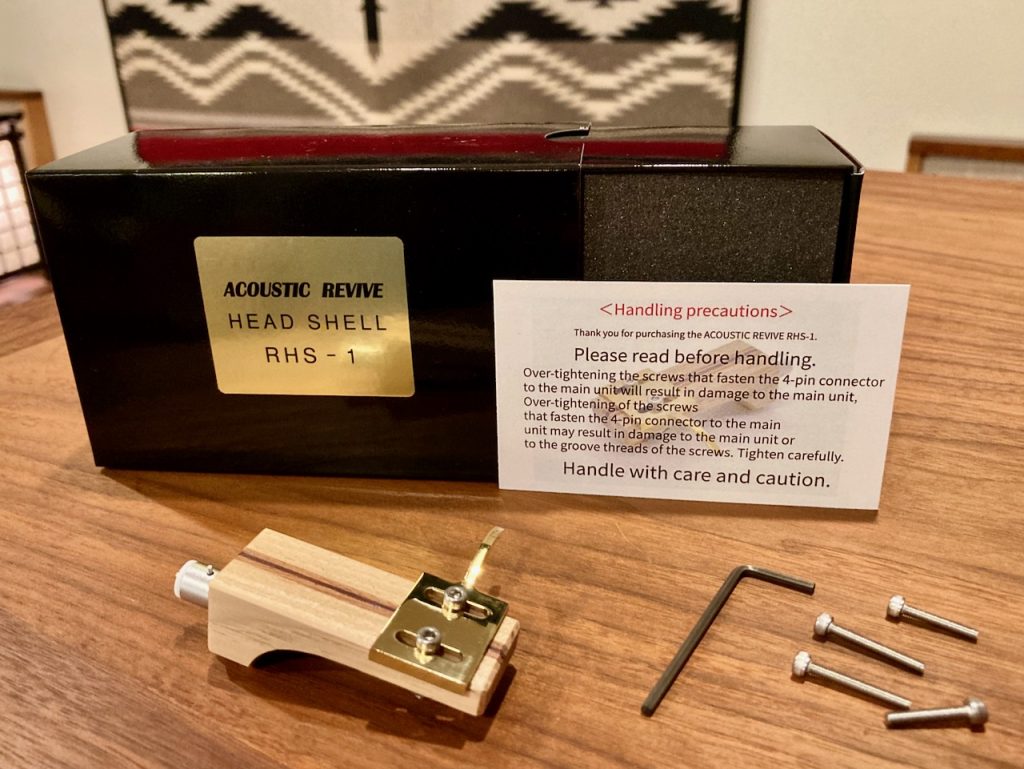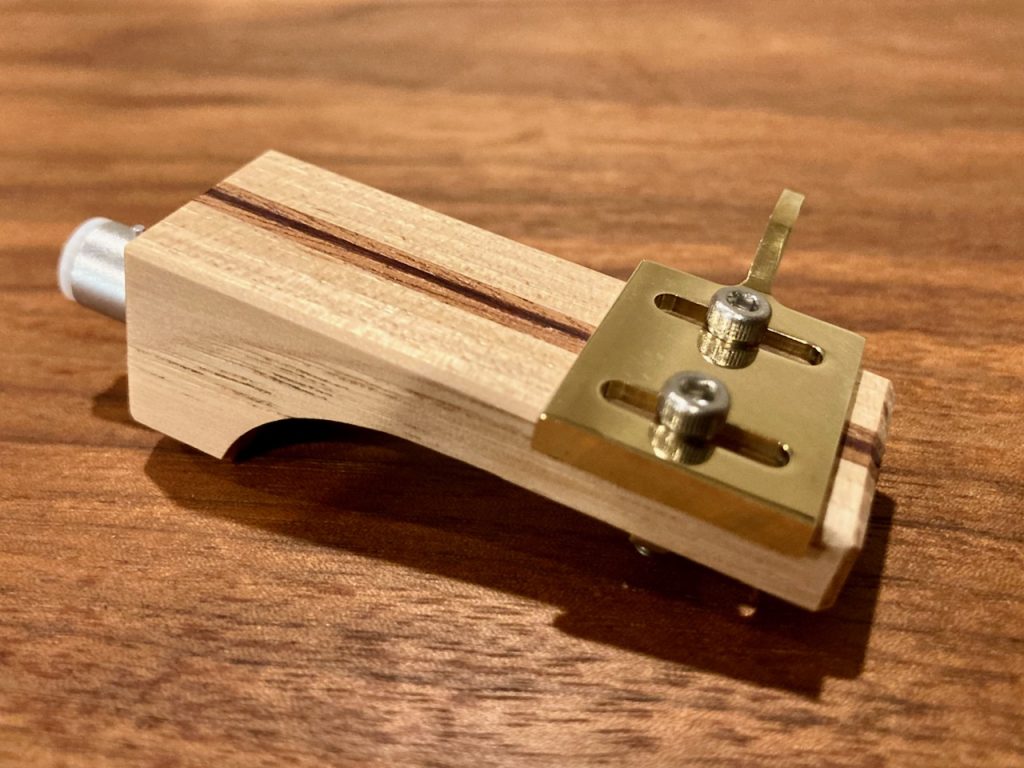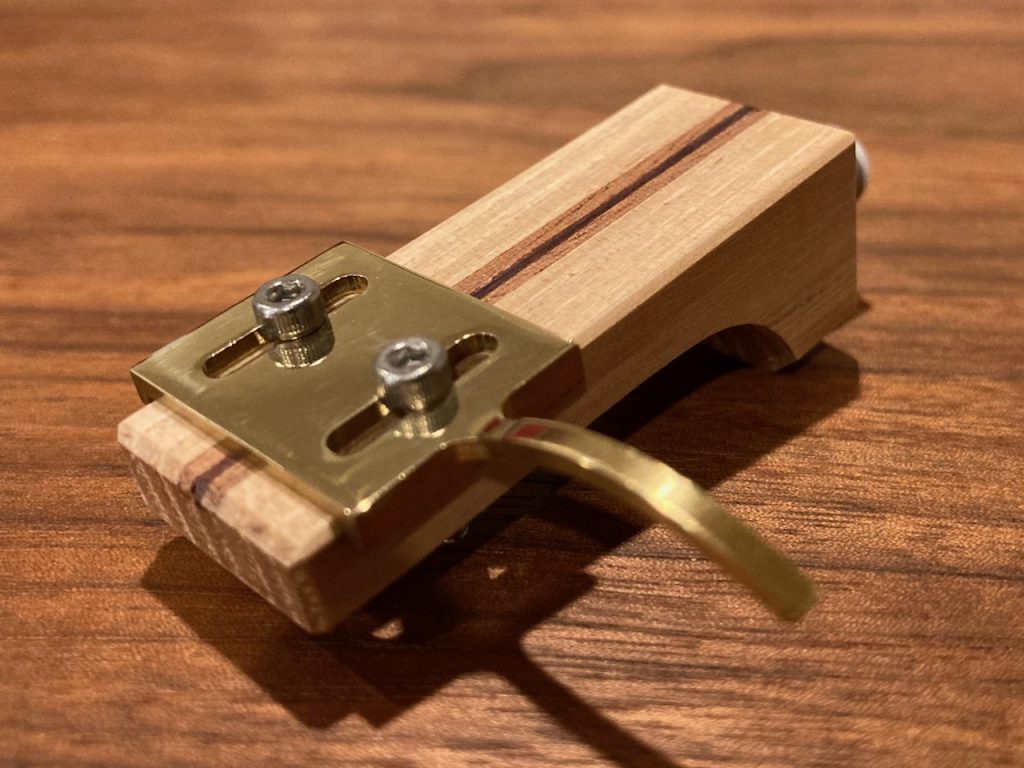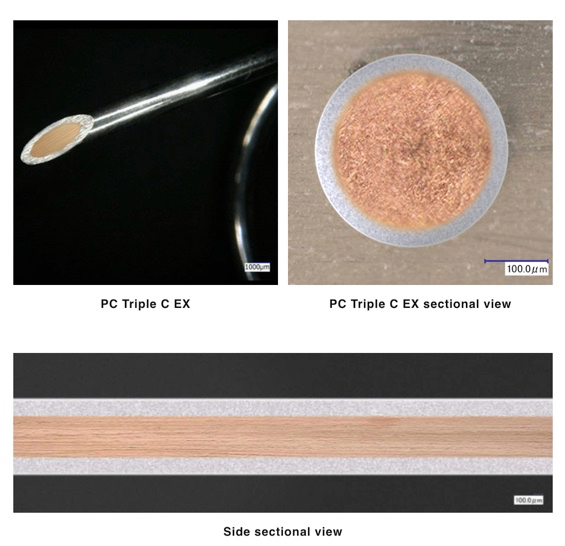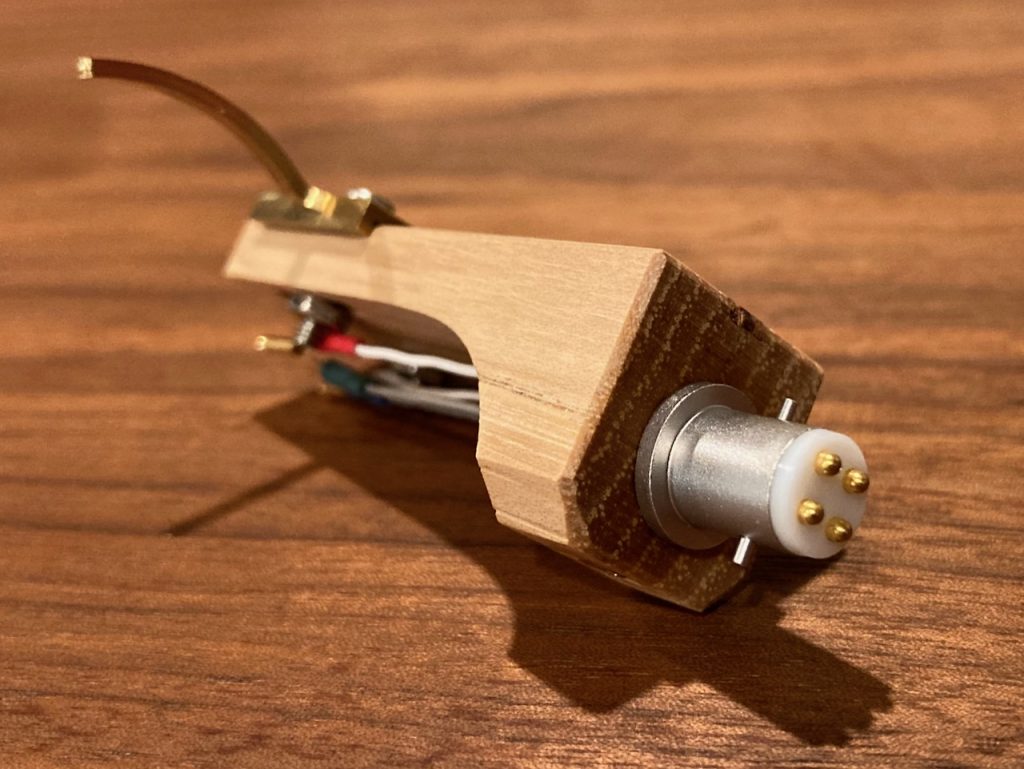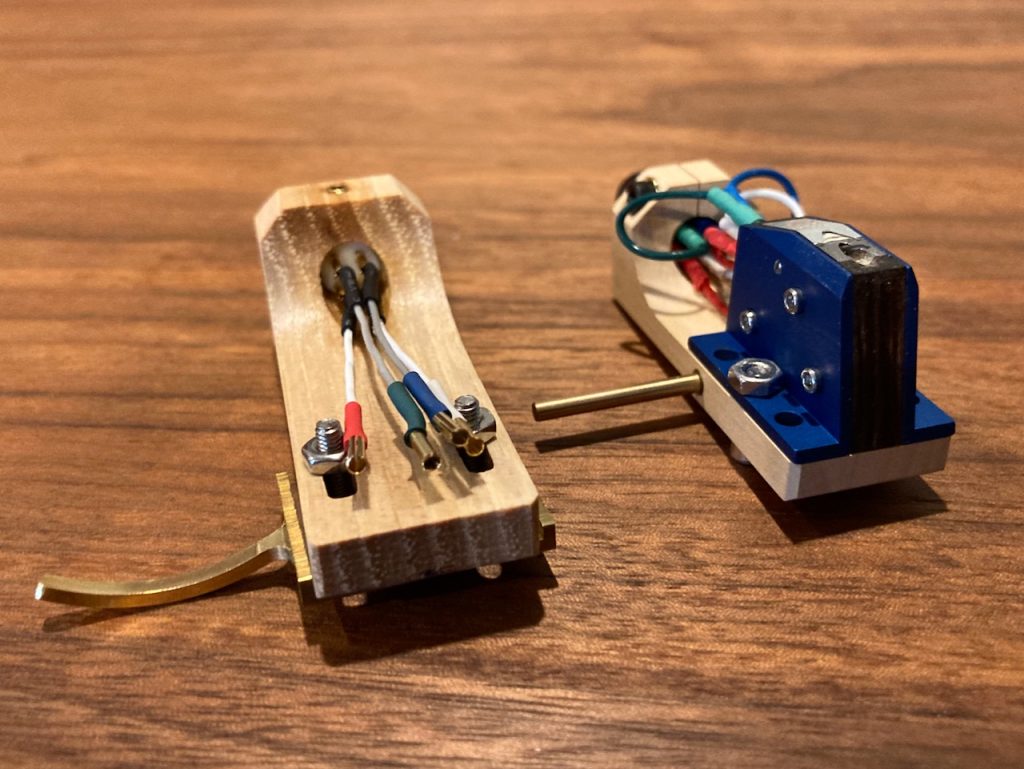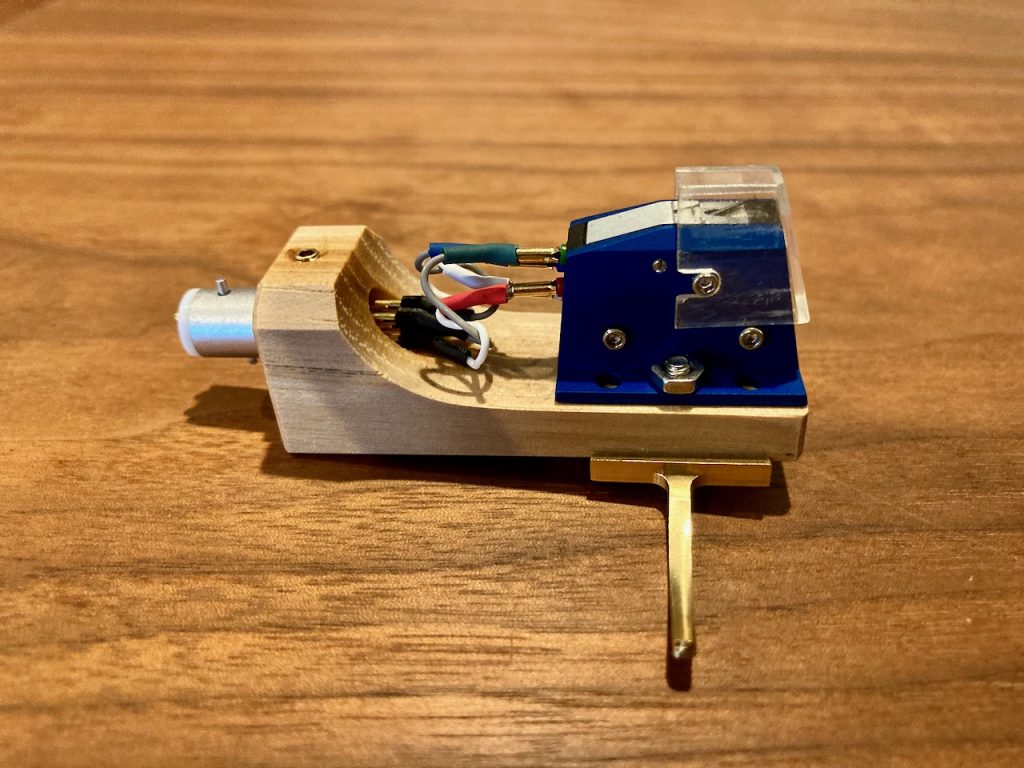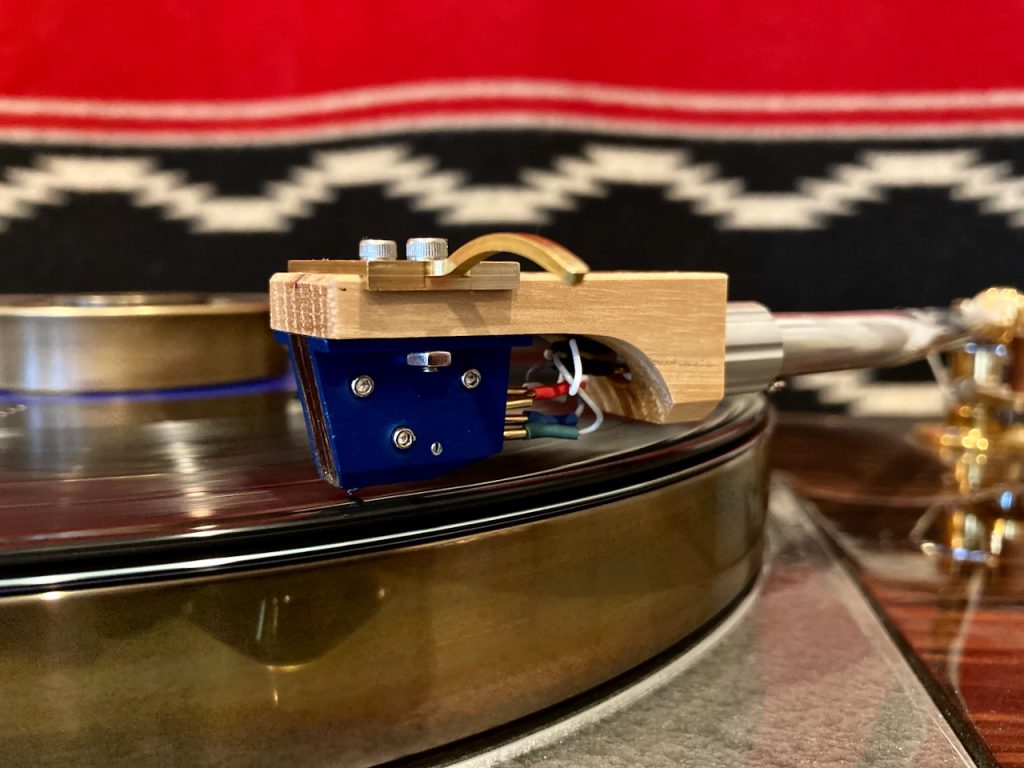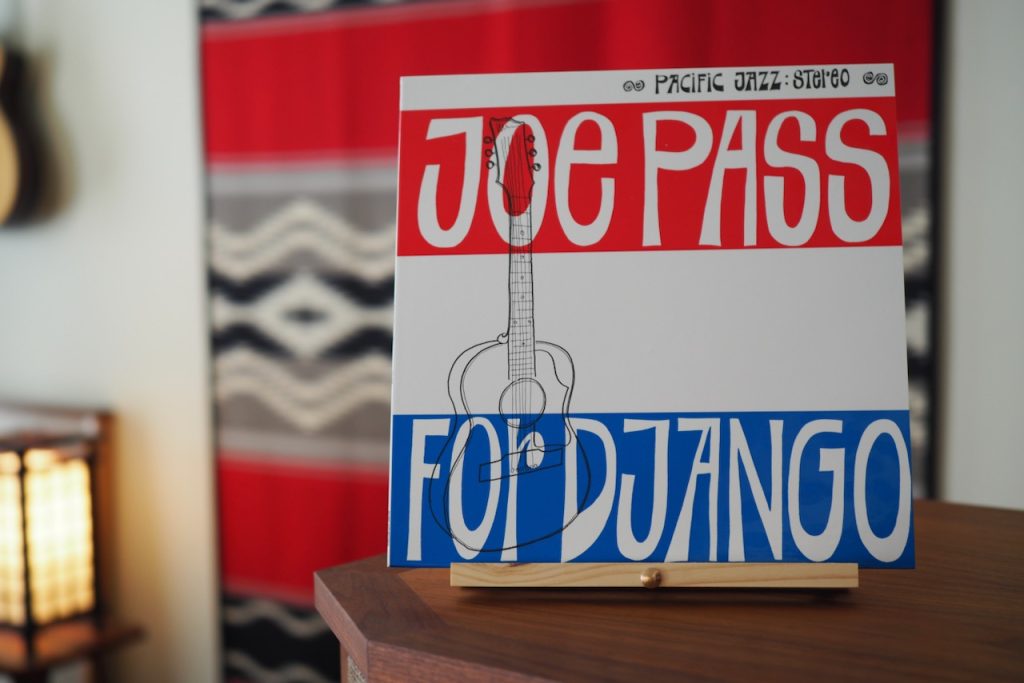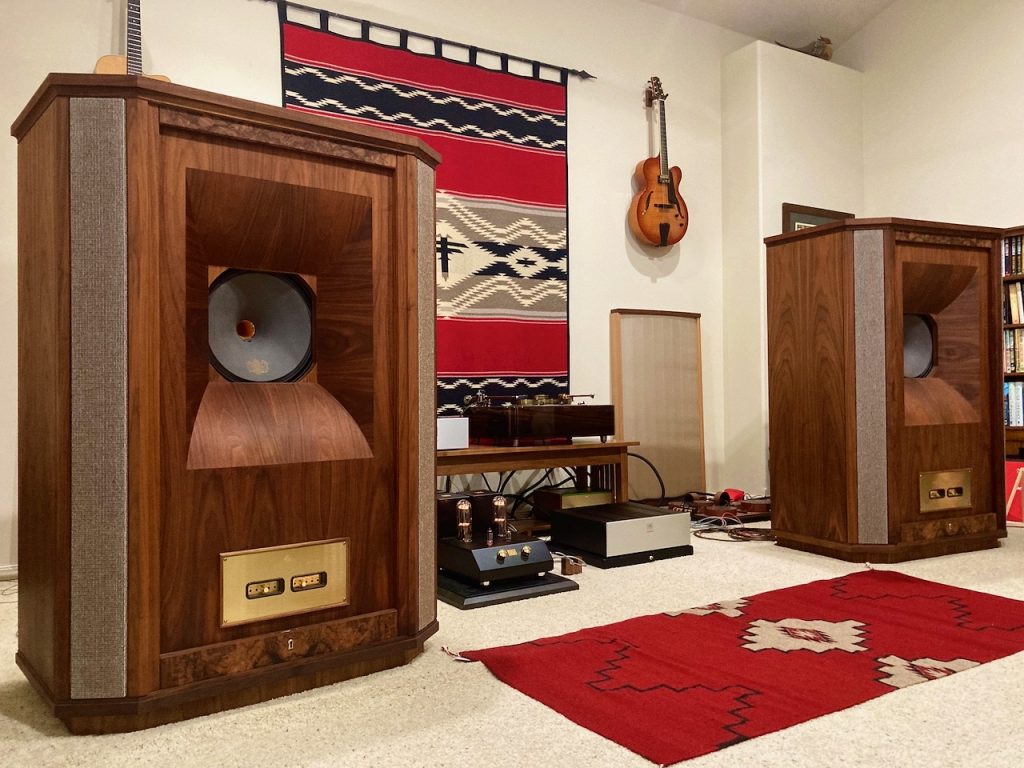Today's First Listen features the artisanal Acoustic Revive RHS-1 headshell.
In my recent Today's Fresh Catch article about the latest Acoustic Revive accessories that have arrived for review, I told you about the custom Acoustic Revive RHS-1 headshell that is the result of a collaboration between Ken-san and Shinichi Masuda (Fibonasound), who is a master artisan of headshell design.
One of the many things I admire about Japanese culture is their artisanal approach to elevating what would normally be considered ordinary items or activities to an art form.
It shouldn't come as a surprise that Ken-san and Masuda-san fall into this "national treasures" category for the artisanal work they do in audio, and when the two collaborate the results are impressive!
The RHS-1 headshell is a artisanal approach to a high-performance headshell, with the goal of allowing as much of the signal from the cartridge to pass through as possible, as any signal lost on the front end is lost forever.
The headshell body is a combination of hickory, mahogany, and rosewood, a combination of woods considered by Ken-san to be sonically optimum, as well as being beautiful in appearance, thanks to Masuda-san's impeccable woodworking skills in combining the woods into the headshell's body.
Here's what Masuda-san says about his custom wooden headshell bodies:
"Fibonasound wooden headshells are handcrafted works of art intended as musical upgrades. It is made in Japan. Wooden headshells have many inherent advantages: resonance peaks are absorbed by the wood, providing a natural, effortless, warm sound all year round. You will especially feel them when you are tired."
"The headshell must be strong, and we have carefully selected a specific gravity of 0.7 or higher, with an emphasis on the beautiful grain of the wood, which can only be achieved with wood. The thickness of the wood is also sufficient so that there is no trace loss."
"The speed of sound transmission is related to density and modulus of elasticity, and we do not consider the grain of the board to be a bad thing. We also produce pieces with perpendicular lines to vertical grain. (In this case, consider the sound velocity number to be one-half.)"
"Fibonasound wooden headshells are one of a kind, so you can find your own special one. And don't forget to enjoy the natural grain of the wood."
"We have changed the finishing process since 2023. The important finishing process does not interfere with the breathing of the wood, which is related to sound, and brings out the original color. It takes about 2 weeks because of slow drying and slow penetration. After the wood is acclimated to the new finish, a thin coat of Washin water-based craft lacquer finish without luster, which is inspired by traditional Japanese lacquer, is applied."
"The finger rest is made of non-magnetic brass and is a little longer for ease of use. The brass finger rest also provides a secure mounting platform for the cartridge while protecting the wood body, preserving the woods tonal character."
The headshell leads are a single-wire conductor of PC-TripleC/EX, a hybrid forged conductor of silver and copper developed by Acoustic Revive. The PC-TripleC/EX is composed of 5N purity grade silver tubing with a 5N purity grade copper conductor running through its center. These silver/copper conductors are then forged via the compressive forces of being drawn through a die to form a single-wire conductor. Ken-san says that the PC-TripleC/EX has a conductivity of 105% compared to pure copper.
Ken-san says, "In addition, most lead wires insulation are made of PVC with poor dielectricity, but the RHS-1 adopts Teflon insulation with excellent dielectric constant. The specific dielectric constant of PVC is 5.6 and the specific dielectric constant of Teflon is 2.2, which is nearly one-third of the value, so the transmission speed is overwhelmingly improved and the transmission loss and transmission deterioration are drastically reduced."
The RHS-1 headshell utilizes a custom SME 4-pin connector with pins made of a silver-copper alloy that have enhanced conductivity over the usual SME connector brass pins.
Ken-san says, "Most SME connector pins are made of brass, and if the conductivity of pure copper is 100%, brass has only a conductivity of 30% or less, so no matter how low the impedance cartridges you use, no matter how high the conductivity of the leads, there is a large transmission loss in typical brass pins. In the RHS-1 I adopted a new material that is an alloy of copper and silver, and the conductivity is almost 100%. The improvement of the conductivity of more than 70% leads to an overwhelming sound quality improvement."
I should add that originally the RHS-1 headshell collaboration between Ken-san and Masuda-san was limited to 100 pieces, and those have sold out. Due to the RHS-1 headshell's popularity, another 50 units of additional production were commissioned, and when those are sold out orders will be closed.
So if you weren't one of the fortunate individuals who bought one of the first 100 Acoustic Revive RHS-1 headshells commissioned, you have a second chance to own one of these artisanal headshells.
Should you dally too long and miss this second chance, you can buy a Fibonasound wooden headshell with a different wood combination, PC-TripleC/EX extruded silver-copper leads, and a SME connector with silver-alloy pins, directly from Fibonasound.
After putting on its stylus guard, I transferred the Audio Note (UK) Io I moving-coil cartridge from the Soundsmith headshell I've been using over to the Acoustic Revive RHS-1 headshell.
Some caution is in order when handling/attaching the PC-TripleC/EX extruded silver-copper leads to the cartridge. They are stiff. I pre-bent them around a pencil so they would have more flex & give during mounting, otherwise you run the risk of breaking them at the clips. Be careful!
After getting the Io I MC cartridge transferred to the RHS-1 headshell, I installed it on my Schick tonearm, checked the tonearm height, dialed in the tracking force with the counterweight on the Schick arm, set the VTA, azimuth, etc., and put on a record to test the result.
If you read my First Listen impressions about the combination the Spec AP-UD1 mat and the Joe Pass For Django LP from the Blue Note 'Tone Poet' reissue series, you know that I thought that combo was a touch unnatural sounding by being a bit too big, bold, and dynamic sounding, which made images on the soundstage sound 'crowded' for lack of a better word.
The combo was just a bit too extroverted, too dramatic, to in my face on For Django. Can something sound overly impressive? Yep.
I thought that the challenging combination of the AP-UD1 mat and the For Django LP, would make for a good test of the Acoustic Revive RHS-1 headshell.
Everything else in the analog signal path was the same: the Audio Note (UK) combination of the Io I moving-coil cartridge, AN-S4/L silver SUT, AN-V silver interconnects, M3 RIAA phono stage (in for review), Tomei 211 SET integrated amp (in for review), AN-SPe silver speaker cables, and my Tannoy Westminster Royal SE loudspeakers with their outboard Duelund CAST crossovers.
All I did was substitute the Acoustic Revive RHS-1 headshell for the Soundsmith headshell.
I guess after all the years I've been writing about audio, the element of surprise when listening to something new would be moderated, but no, the Acoustic Revive RHS-1 headshell still evoked a "Wow!" from me while listening to For Django.
First of all, the Acoustic Revive RHS-1 headshell recovered a lot more information from For Django. The RHS-1 was considerably more transparent, and there was much more timbral nuance in evidence in the guitars, bass, and drums. Overtones were more evident, and they decayed for longer, for example.
I suspect the extra resolution and transparency was courtesy of the PC-TripleC/EX extruded silver-copper leads & the silver-copper alloy SME pins getting more of the signal information through from the cartridge.
Yet there was also more of sense of naturalness and liquidity as the music flowed along. Perhaps due to the combination of woods used in the headshell body?
All the strengths I heard from the Spec AP-UD1 mat were still in evidence, the big sound, the authoritative presentation, the high level of drama, but now it sounded more naturally live-like, more like the excellent studio recording For Django is, rather than being just a bit too much.
Perhaps the biggest difference was that I could relax into the music easier, rather than feeling like I was on the edge of my seat while listening.
No longer was For Django the overbearing salesman in my face, but was transformed into an engaging 'soft sell' that I found to be much more natural and enticing.
The emotional range expanded. No longer was the portrayal of music a fight-or-flight fest of stimulation, but more subtle emotional shades of the music were revealed as well. More beauty. A more charming and elegant portrayal of mellower passages.
Another notable difference was how the 'studio' soundstage took on a greater degree of naturalness, the images arrayed upon the 'stage' no longer sounded crowded and competing with each other. They just sounded like a really good studio recording should, with a cushion of spaciousness around the images, along with a big wide soundstage.
I've been happily using the Soundsmith headshell I bought some years back, which is similar to the concept of the Acoustic Revive RHS-1 headshell, in that the bodies of both headshells are wood.
The similarities end there, however, as the RHS-1 has higher mass - 19 grams compared to the Soundsmith's 9.6 grams - due to more wood in the body and the substantial brass finger lift.
Of course there's also addition of the exotic SME connector with silver-copper alloy pins and the PC-TripleC/EX extruded silver-copper leads the RHS-1 is equipped with.
The artisanal hand-crafting of the RHS-1 wood body, the exotic PC-TripleC/EX extruded silver-copper leads, and SME connector with silver-copper alloy pins, comes at an additional cost, however, at $595.81 USD. The Soundsmith wooden headshell with its generic leads and SME connector costs only $99.99 USD.
Is the artisanal Acoustic Revive RSH-1 headshell worth the extra $500 over the Soundsmith?
I suppose that depends on how deep your pockets are and your definition of value, but I'd say yes it is. It's a big step forward in sound quality and musicality.
Ok, that's it for now. As I get more listening time in with the Acoustic Revive RSH-1 headshell I'll provide any new insights I have about it in a future post.
As always, thanks for stopping by, and may the tone be with you!




